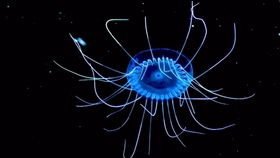Content:
Shallow water fishing can be an incredibly rewarding experience, offering anglers the chance to catch a variety of fish in a more intimate setting. Whether you're a seasoned fisherman or a beginner looking to expand your skills, understanding the unique challenges and techniques of shallow water fishing in rivers can significantly improve your chances of success. In this article, we'll delve into the essentials of shallow water fishing techniques and provide you with practical tips on how to fish effectively in river environments.
Understanding Shallow Water Conditions
Shallow water fishing occurs in areas where the water depth is typically less than 10 feet. In rivers, these areas can include slower currents, shallow pools, or the edges of deeper water. Understanding the behavior of fish in shallow water is crucial for successful fishing.

Fish Behavior: Fish in shallow water often rely on cover to hide from predators. Look for areas with vegetation, rocks, or logs where fish can seek refuge. During the day, fish may be more active in these areas, while at night, they may move to slightly deeper water to feed.
Water Temperature: Shallow water can heat up quickly, especially in sunny conditions. Fish may move to cooler areas in search of respite. Pay attention to the water temperature and adjust your fishing spots accordingly.
Currents: Rivers with strong currents can make shallow water fishing more challenging. Fish may congregate in areas where the current is less intense, such as behind rocks or near the riverbank.
Choosing the Right Equipment
The equipment you use for shallow water fishing in rivers should be lightweight and designed for casting in tight spaces.
Rod and Reel: A medium-action rod with a fast tip is ideal for shallow water fishing. The rod should be long enough to cast effectively but not so long that it becomes unwieldy in tight spots. A spinning reel with a good drag system is also essential.
Line: Use a monofilament line with a thickness that matches the rod's rating. For smaller fish, a lighter line may be preferable, while heavier lines are better for larger species.
Lures and Baits: The choice of lure or bait depends on the species you're targeting. For rivers, soft plastics, spinners, and fly fishing setups can be effective. Live bait, such as worms or minnows, can also be productive.
Fishing Techniques
Here are some techniques to help you catch fish in shallow water river environments:
Wading: If the water is safe to wade, move slowly and carefully to avoid spooking fish. Keep your movements deliberate and try to minimize splashing.
Cast and Retrieve: Cast your lure or bait into the desired area and retrieve it in a smooth, rhythmic motion. Vary the retrieve speed and depth to mimic natural fish movements.
Trolling: In slower currents, you can use a trolling technique to cover more water. Attach your lure or bait to a fishing line and pull it through the water with a steady pace.
Stalking: In areas with dense vegetation or rocks, you may need to stalk the fish. Move silently and observe the water carefully for any signs of fish activity.
Drift Fishing: In rivers with strong currents, drift fishing can be effective. Attach your lure or bait to a floating device and let the current carry it through the fishing area.
Tips for Success
- Early Morning and Evening: Fish are often more active during these times, so consider fishing early in the morning or in the evening for better results.
- Patience: Shallow water fishing can be unpredictable. Be patient and be prepared to wait for the fish to bite.
- Local Knowledge: Talk to local anglers or guides to learn about the best spots and techniques for fishing in your area.
- Conservation: Always practice catch-and-release fishing when possible, and be mindful of the environment to preserve it for future generations.
By understanding the unique conditions of shallow water fishing in rivers and applying the right techniques, you can increase your chances of success and enjoy a rewarding day on the water. Remember to respect the fish and the environment, and you'll be well on your way to becoming a proficient shallow water angler.












